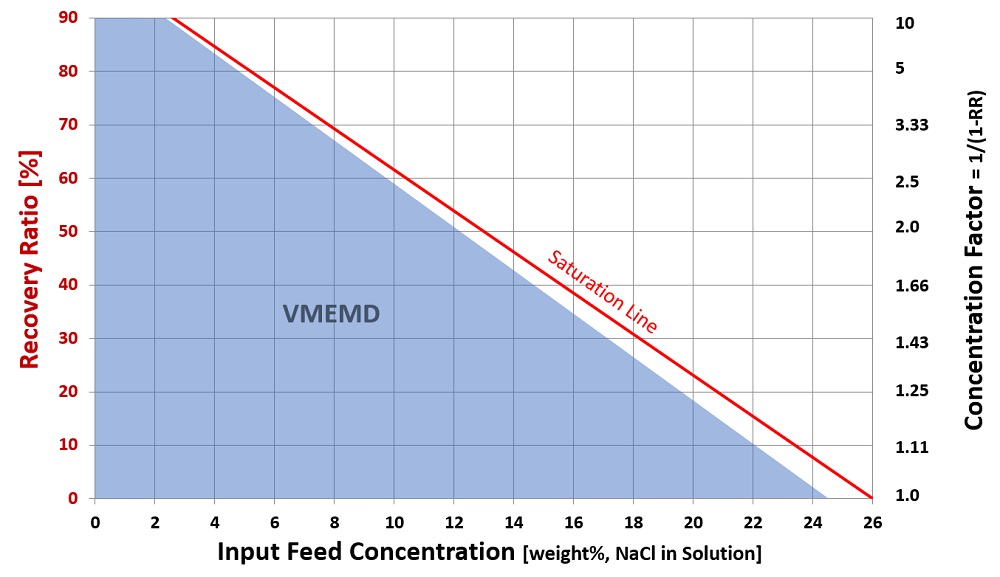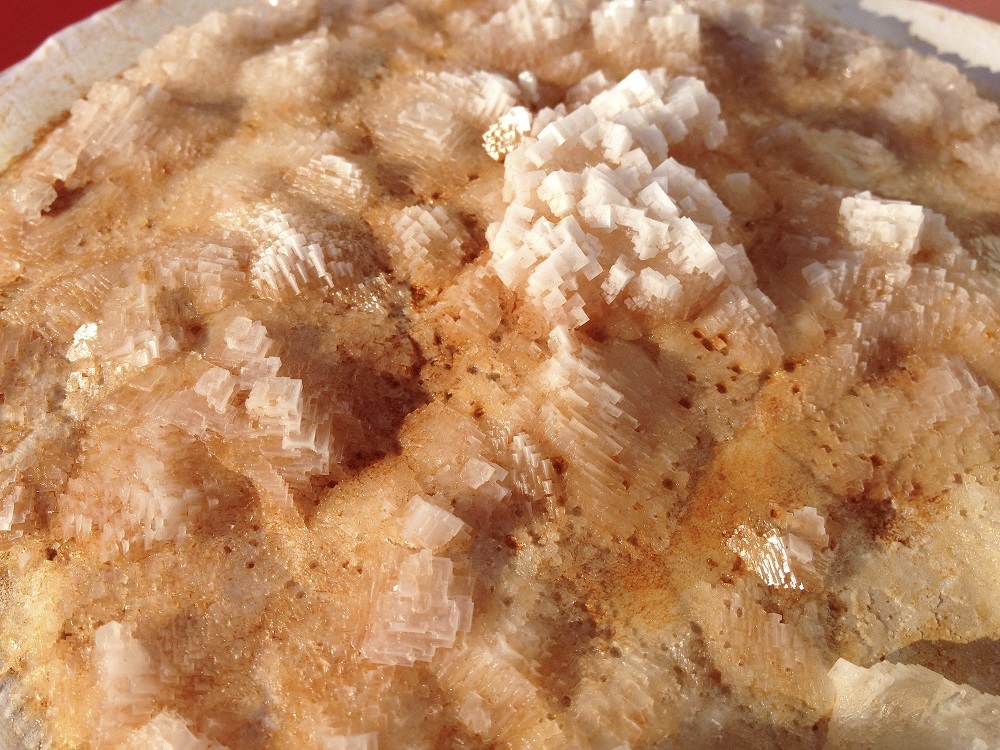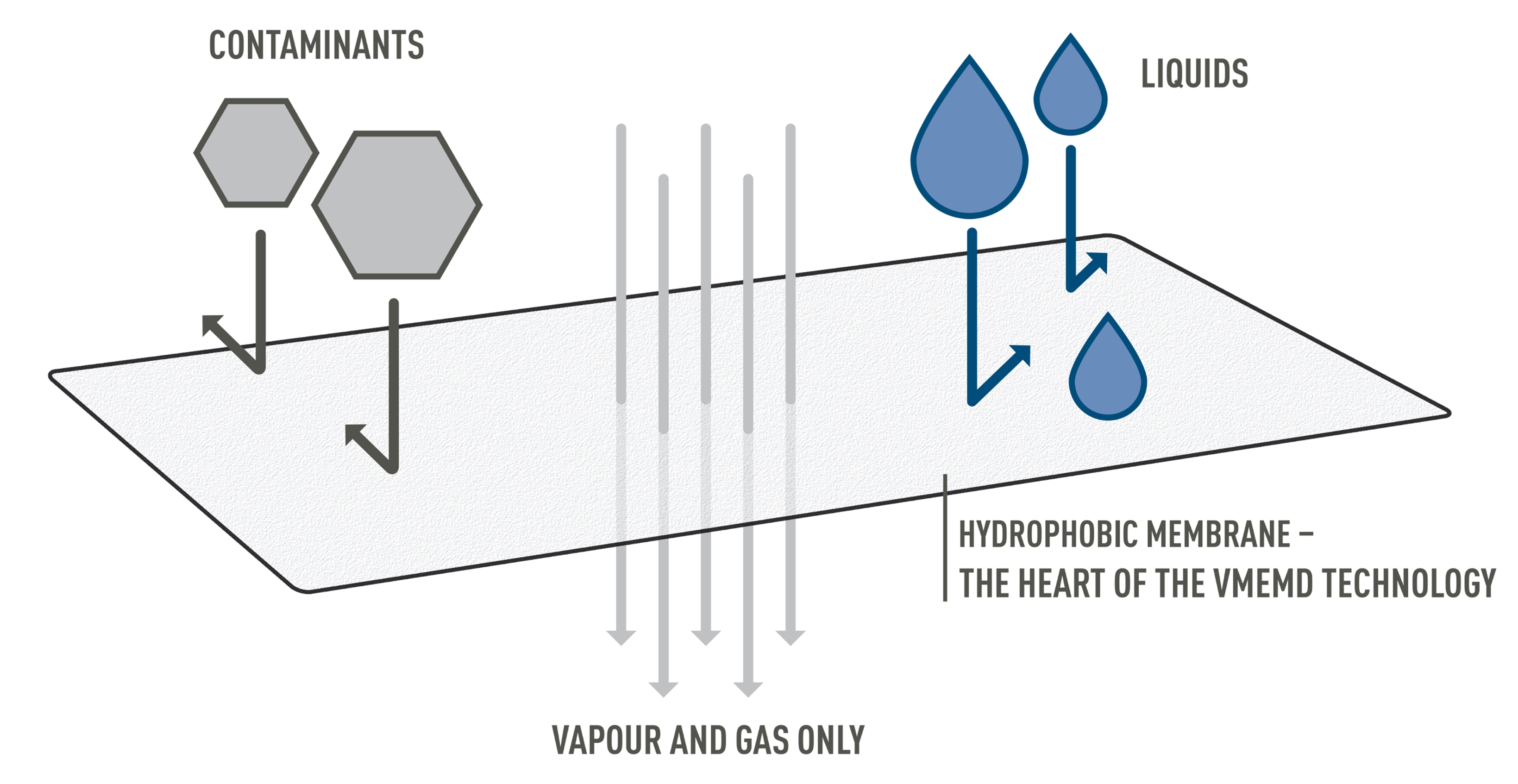
The engineering team behind EvCon has developed the thermal separation process Vacuum Multi-Effect Membrane Distillation (VMEMD).
VMEMD is a hybrid technology based on vacuum thermodynamics. This patented procedure combines the thermal separation process, multi-effect-distillation, with filtration of the generated vapor through hydrophobic membranes.
These engineered layers create the phase boundary for evaporation within the VMEMD modules: The membranes are tight for water but permeable for gas. Only purest vapor can pass and any droplets or contaminants are repelled. The result is premium distillate – in just one step.
Following sketch describes the function principle of the used membranes:

The VMEMD technology has been continually developed over a period of ten years by a team of specialists committed to the technology’s optimisation. EvCon was previously known as memsys, which launched generations I and II of its patented membrane modules, and successfully introduced the technology to projects in the US, Europe, Asia and Middle-East.
EvCon is now bringing to the international market a third generation module, which has revolutionised the offering on account of its scalability, lower costs and greater efficiency. Furthermore, fully automated production lines drive an improved production strategy with higher capacity, reduced costs and 100% quality control.

An EvCon Unit separates distillate from a feed flow. The rest of the feed is ejected as concentrate. The process requires heating, cooling and some electricity to operate.
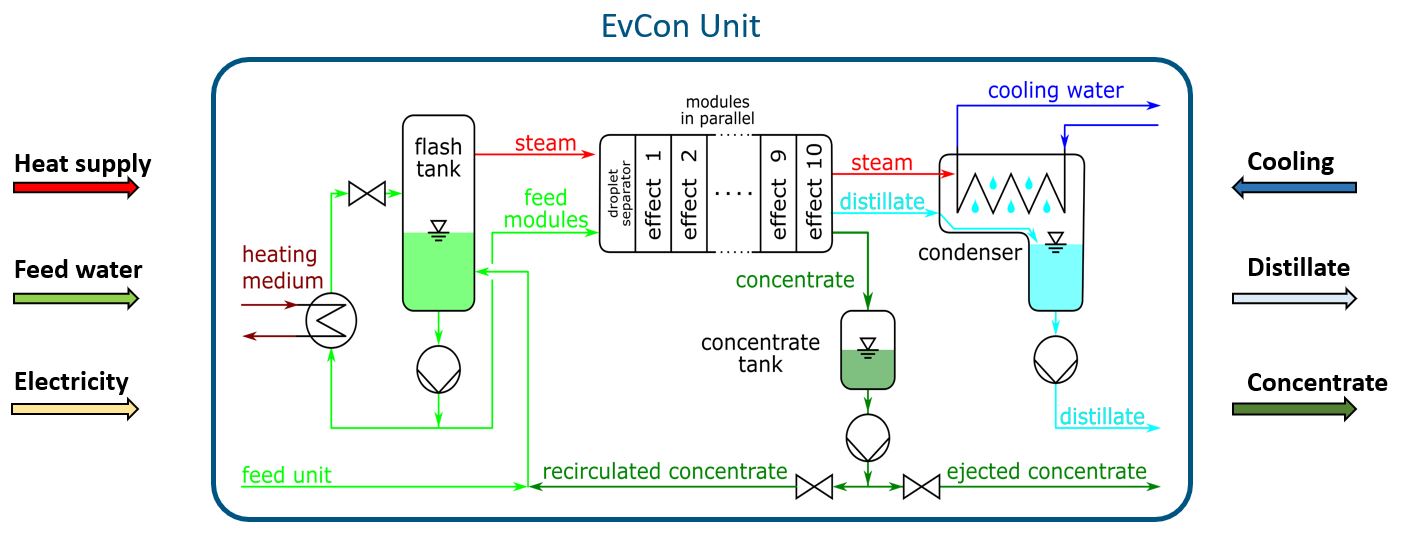

The feed water and the vapor for heating are introduced into the VMEMD modules. The process then takes place in numerous sequential effects.

In the first effect, the feed is partially evaporated using the heat of condensation from the incoming vapor. The new vapor generated serves as heat source in the next effect.
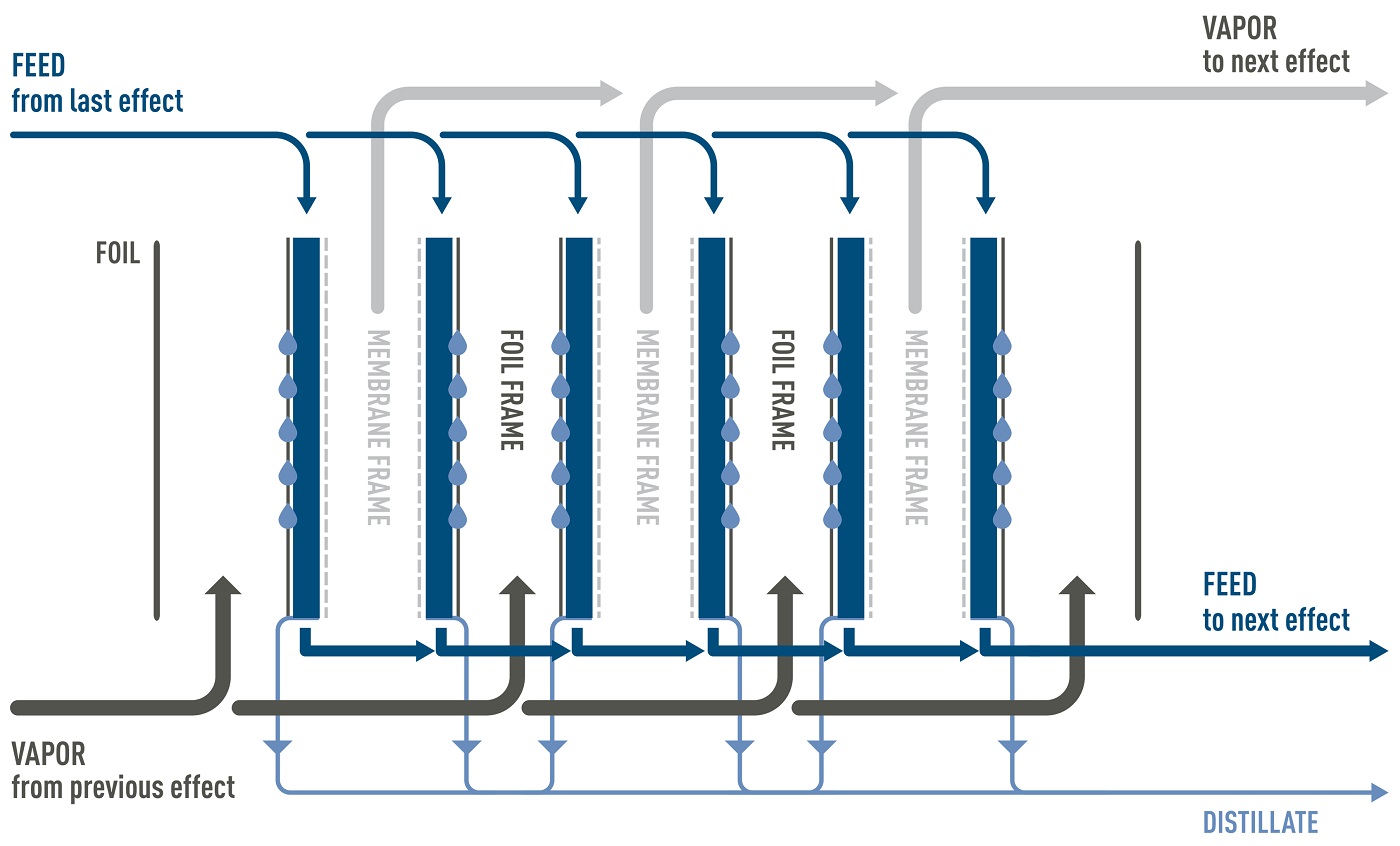

In this manner, the heat that was initially introduced is re-used in each effect, leading to high thermal efficiency throughout the entire process.

With each effect, the amount of distillate increases, while the concentration of the remaining feed continually rises. The end products are highly pure water and a concentrated rest – achieved by the excellent separation quality.

The entire separation process takes place in an evacuated atmosphere (vacuum). This allows the distillation process to work at temperatures below 85°C, which means the system can be operated with conventional low pressure heating systems, solar energy or waste heat from other processes.

The core of the VMEMD method is an interaction between the hydrophobic, vapor-permeable membrane and a thin polymer foil. The membrane holds back liquid, bacteria, germs and other impurities. Only ultra-pure vapor is able to pass through – and it is condensed in the next effect on a very thin and resilient foil.

In this way, no drops are carried along during the evaporation process. The result is an premium, high-quality distillate.

Distillate at <<1 µS/cm conductivity for premium distillate applications

Concentrates up to saturation level

The process operates at temperatures below 85°C => steam can be used, but hot water / waste heat is sufficient

Efficiency due to the multiple-effect approach

Low electric energy demand

Use of high quality polymer materials only

Materials used are cost-effective and corrosion-resistant

First modular thermal system allowing for wide scalability

Small footprint

Self-adjusting and stable operation

Excellent part-load behaviour and low maintenance
The following values for the distillate quality have been confirmed in client tests:
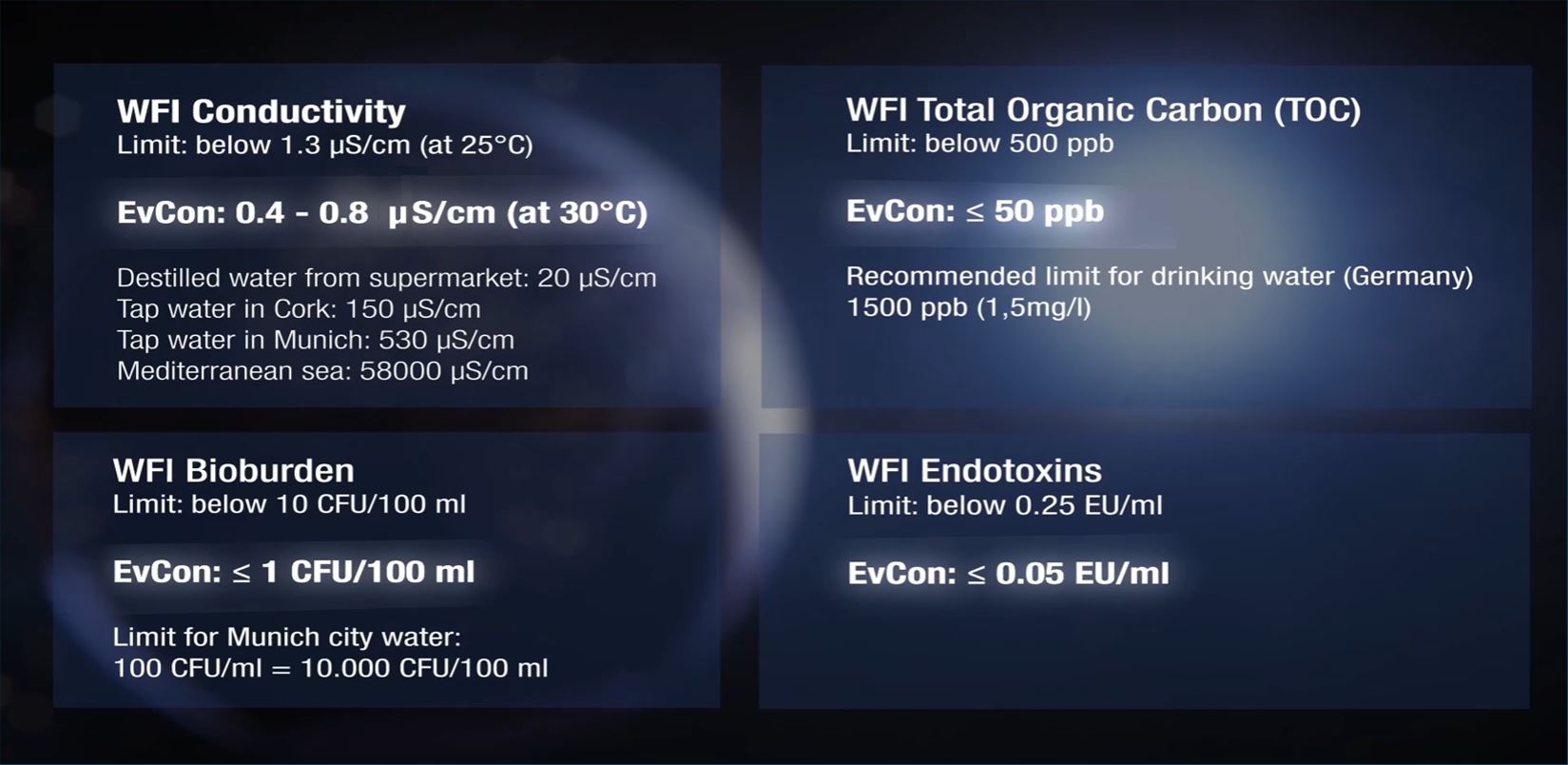
The diagram below shows the possible range for the Recovery Ratio or the Concentration Factor of a VMEMD system in operation with salty feed solution at a specific salt concentration. The diagram uses the solubility limits of NaCl what is the major dissolved salt in sea water. The feed water could also contain other salts like LiCl, CaCl2 or Na2SO4. Only saturation is the limit (approx. 26 wt.% for sodium chloride).
